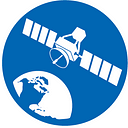Member-only story
How to use Pycaret for classification?
PyCaret is a popular open-source library for machine learning in Python. It provides a simple and easy-to-use interface for training and deploying machine learning models. In this post, we’ll go through the steps involved in using PyCaret for classification.
First, let’s make sure we have PyCaret installed. We can install it using pip:
pip install pycaret
Now, let’s start by loading some data for classification. We’ll use the famous Iris dataset as an example:
from sklearn.datasets import load_iris
import pandas as pdiris = load_iris()
df = pd.DataFrame(data=iris.data, columns=iris.feature_names)
df['target'] = iris.targetNext, we need to initialize a PyCaret classification object:
from pycaret.classification import *clf = setup(data=df, target='target')This initializes a PyCaret environment for classification with the specified data and target variable. PyCaret will automatically preprocess the data and split it into training and testing sets.
Now, we can compare different classification models using the compare_models() function:
best_model = compare_models()